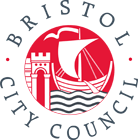We need to admit that cycling and walking are completely different activities
- 6th August 2020
Dr Suzanne Audrey is a Co-Director of our Supporting Healthy Inclusive Neighbourhood Environments Health Integration Team (SHINE HIT) and a senior research fellow in public health at the University of Bristol. She has an interest in the benefits that walking has on health and on local transport issues. This blog was first published on Bristol 24/7.
We need to stop talking about “cycling and walking”.
That does not mean we should stop talking about cycling, or that we should stop talking about walking – we just need to admit they are completely different activities.
The problem with talking about “cycling and walking”, particularly in relation to transport policy, is that the conversation invariably focuses on cycling.
This is evident in the recent Department for Transport publication Gear change: a bold vision for cycling and walking, which has four themes: Better streets for cycling and people, cycling at the heart of decision making, empowering and encouraging local authorities, enabling people to cycle and protecting them when they do, plus an appendix summarising principles for cycle infrastructure design.
The document clearly presents a vision for cycling, not walking, but at least it asserts that “cycles must be treated as vehicles, not as pedestrians” and transport planners are warned “new cycle provision which involves sharing space with pedestrians, including at crossings, will no longer be funded”.
For those who wonder what a vision for walking might look like, the Bristol Transport Strategy devotes a section to walking based on joint work between transport officers at Bristol City Council and public health researchers at the University of Bristol.
Ten actions are proposed for walking to be safe, pleasant, accessible, the first choice for local journeys and combined with public transport for longer journeys.
- Deliver a strategic walking network: Rather than assuming there is an adequate network of footways requiring minimal intervention, it is important to identify and enhance key walking routes.
- Adopt design standards for inclusive walking infrastructure: Consideration of people with visual, mobility and cognitive impairments should be integral to the pedestrian environment so that the most vulnerable users can get around in safety and comfort.
- Develop walkable communities through planning and development: The health, social and economic benefits of neighbourhoods, where shops and facilities are within walking distance, should be prioritised in the planning process.
- Connect walking to public transport: Improving walking routes and providing clear signage to rail stations and bus stops should make it easier to combine walking with public transport.
- Count walking: We need to count, monitor, and set separate targets for walking if it is to be taken seriously as a separate mode of transport.
- Reduce obstructions to walking: The proliferation of bins, parking on pavements and across access points, overhanging vegetation, street clutter, litter and dog fouling require clear policies and better enforcement to make the pedestrian environment accessible and pleasant, especially for those with mobility, visual or cognitive impairments.
- Make walking safe: Being safe, and feeling safe, are influenced by the condition of footways, lighting, pedestrian crossings, the potential for conflict with other modes of transport, levels of noise, and air pollution.
- Make walking pleasant and comfortable: the pedestrian environment requires access to toilets, drinking water, benches as resting places, shaded areas, and places to shelter.
- Provide walking information: Details of routes, distances and facilities should be available online and in local maps, as well as through the Bristol Legible City on street information panels.
- Support walking through travel planning and enabling behaviour change: The transport plans of organisations such as workplaces, schools, universities and colleges, shopping centres and leisure facilities should include walking routes and distances to key landmarks, bus stops and train stations.
These ten actions for walking are significant, but who will speak up for them?
Census data suggests a “typical” person who cycles to work in Bristol is a white male, aged between 25 and 39, has a degree and works full time in a professional occupation.
Meanwhile, people who walk to work are more likely to be aged under 30, working in semi-routine or intermediate occupations, female, from minority ethnic groups, and with no obvious variation between those with no qualifications and those with a degree.
It is perhaps not surprising that high-profile advocates for “cycling and walking” have tended to be men who cycle.
The actions for walking contained within Bristol’s Transport Strategy will require advocates whose main mode of transport is walking, supported by transport officers who understand that we need to stop talking about “cycling and walking”.






